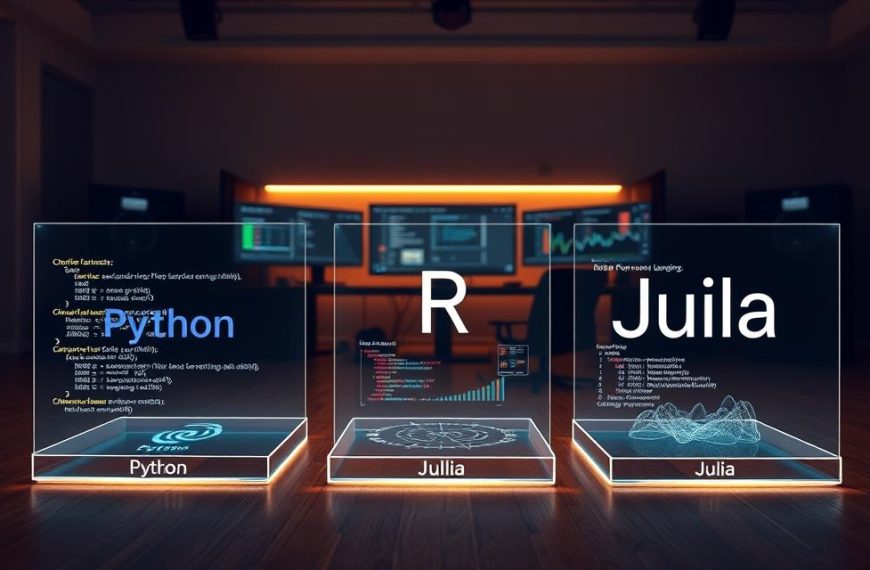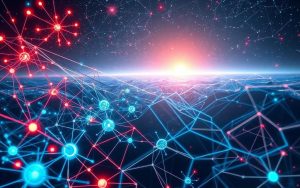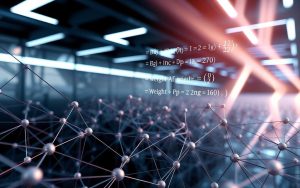Modern computing owes much of its progress to systems that mimic biological processes. Among these, computational models inspired by the human brain’s architecture have revolutionised how machines process information. These structures, known as artificial neural networks, form the backbone of advanced decision-making systems in technology today.
By arranging interconnected nodes into layers, these networks analyse data through weighted connections and adaptive thresholds. This design enables them to recognise patterns, make predictions, and improve their accuracy over time – much like how biological systems learn from experience.
As a core component of contemporary machine learning, such networks power everything from voice assistants to medical diagnostics. Their layered approach allows complex data processing, transforming raw inputs into actionable insights. This capability makes them indispensable for developing deep learning models that tackle real-world challenges.
Understanding these systems is essential for professionals in data science or technology-driven fields. This guide will explore their architecture, learning mechanisms, and practical applications – balancing technical depth with accessible explanations. Whether you’re new to the field or seeking to strengthen your knowledge, the following sections will provide valuable insights into this transformative technology.
Introduction: Demystifying Artificial Neural Networks
Complex challenges in technology often require solutions that evolve through trial and error. Biological systems excel at this – consider how the human brain refines its neural pathways with each experience. Modern computational systems mirror this adaptability through layered architectures designed to process information dynamically.
Biological Inspiration, Digital Execution
Just as biological neurons transmit signals through synapses, artificial systems use interconnected nodes. These digital counterparts adjust connection strengths (weights) and activation thresholds to interpret patterns. Unlike traditional algorithms, they don’t rely on rigid rules – instead, they self-optimise by analysing outcomes.
Three core components drive this process:
- Nodes: Act as information processors
- Weights: Determine signal importance
- Thresholds: Govern data transmission
This structure enables handling of unstructured data – from identifying faces in photos to parsing ambiguous text. A common misconception suggests these systems possess human-like reasoning. In reality, they excel at pattern recognition within defined parameters, lacking true cognitive awareness.
Adaptive learning allows gradual improvement, much like muscle memory develops through repetition. Each adjustment strengthens accurate responses while suppressing errors. This approach powers technologies that improve fraud detection accuracy by 40% annually in UK banking systems, demonstrating practical impact.
What is artificial neural network in machine learning
In an era where data complexity outpaces traditional algorithms, adaptive systems rise to the challenge. These layered computational models excel at processing unstructured information through interconnected nodes, mimicking cognitive processes without rigid programming.

Unlike conventional machine learning approaches, these architectures self-adjust using feedback loops. They analyse errors to refine connection weights – a process enabling continuous improvement in tasks like speech recognition or fraud detection. UK financial institutions, for instance, use such systems to reduce false transaction alerts by 35% annually.
Three characteristics define their role in modern AI:
- Non-linear processing: Identifies patterns in chaotic datasets
- Scalable architecture: Handles increasing data volumes through added layers
- Contextual adaptation: Adjusts outputs based on real-time inputs
These capabilities make them indispensable for deep learning applications. While traditional methods struggle with ambiguous inputs – like regional accents in voice assistants – layered networks parse nuances through iterative training. This flexibility bridges theoretical AI concepts with practical tools used in healthcare diagnostics and autonomous vehicles.
Their learning mechanisms vary across paradigms. Supervised models refine predictions using labelled data, while unsupervised versions cluster hidden patterns. Reinforcement-based systems, meanwhile, optimise decisions through trial-and-error scenarios – a method revolutionising robotics in British manufacturing sectors.
Architecture and Components of Neural Networks
Digital systems capable of sophisticated decision-making rely on carefully engineered structures. These layered frameworks process information through specialised components, each contributing to accurate outcomes. Understanding their design reveals how raw data transforms into actionable insights.
Input, Hidden, and Output Layers
The input layer acts as the system’s reception desk, standardising incoming data for processing. Whether handling pixel values or text embeddings, this initial tier ensures compatibility with subsequent stages. Its design directly impacts how effectively the network architecture interprets complex patterns.
Hidden layers perform the heavy lifting through iterative computations. Multiple tiers enable progressive feature extraction – basic shapes become facial contours in image recognition, for instance. Research shows UK-based AI startups typically use 3-5 hidden tiers for fraud detection systems.
Final results emerge through the output layer, tailored to specific tasks. This component converts processed signals into probabilities for medical diagnoses or numerical values for stock predictions. Its configuration determines whether the system answers yes/no questions or generates detailed forecasts.
Weights, Biases and Activation Functions
Connection strengths between nodes, known as weights, dictate data’s influence on outcomes. During training, these values adjust to prioritise impactful signals. A bias term offsets imbalances, acting like a seesaw’s pivot point to maintain equilibrium in calculations.
The formula ∑wixi + bias governs each node’s decision-making. Activation functions then determine if signals progress, using thresholds similar to “minimum vote requirements” in committee decisions. Common functions like ReLU (Rectified Linear Unit) enable non-linear processing while preventing computational overload.
One UK robotics engineer notes: “These components form a democratic decision hierarchy – weights assign influence, biases set baselines, and activations enforce quality control.” This interplay allows networks to handle everything from weather modelling to regional dialect interpretation.
Feedforward Models and Backpropagation Learning
Advanced systems refine their capabilities through layered processing and self-correction. At the heart of this improvement lie two critical mechanisms: unidirectional data analysis and algorithmic error adjustment. These components work in tandem to create adaptable solutions for complex tasks.
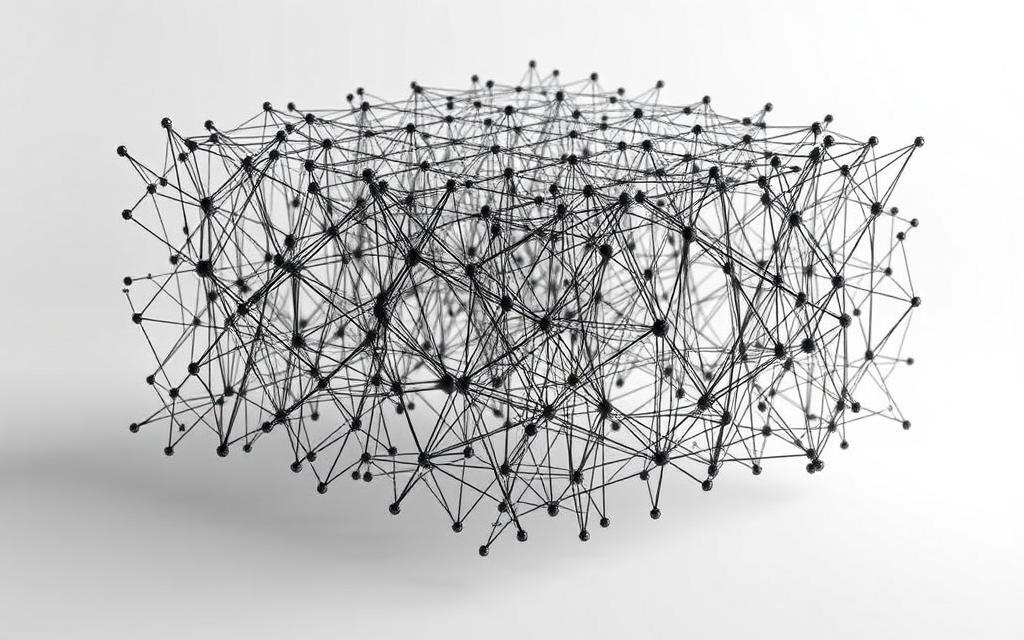
Understanding Feedforward Processes
Feedforward neural networks operate like assembly lines for information. Data travels strictly from input to hidden layers, then to outputs without backtracking. Each connection between nodes applies mathematical transformations, refining signals through weighted sums and activation thresholds.
This architecture excels at tasks requiring progressive feature extraction. For example, UK-based diagnostic tools use feedforward networks to convert patient data into risk assessments. The system’s simplicity ensures rapid processing while maintaining accuracy across diverse datasets.
Error Correction with Backpropagation
Mistakes become learning opportunities through reverse engineering of errors. The backpropagation algorithm:
- Compares predictions against actual results
- Calculates error gradients across layers
- Adjusts connection weights to minimise future inaccuracies
This process resembles how British navigation apps reroute after wrong turns. By updating parameters through gradient descent, networks progressively enhance their decision-making precision. Financial institutions report 28% faster fraud detection improvements using this approach compared to traditional methods.
Combined, these mechanisms form self-optimising systems that power everything from voice recognition to energy consumption forecasts. Their iterative nature makes them particularly effective for handling evolving data patterns in UK tech sectors.
The Role of Activation Functions in Decision-Making
Digital decision-makers rely on mathematical gatekeepers to filter meaningful signals from noise. These computational thresholds, known as activation functions, govern how neurons process and transmit information across layered systems. Without them, networks would struggle to interpret complex patterns in financial forecasts or medical imaging datasets.
Influence on Neuron Firing and Outcomes
Activation functions serve as quality control checkpoints. They evaluate weighted inputs against predefined thresholds, deciding whether a neuron should:
- Forward data to subsequent layers
- Suppress irrelevant signals
- Introduce non-linear relationships
The sigmoid function, for instance, compresses outputs between 0 and 1 – ideal for probability predictions. ReLU (Rectified Linear Unit) prioritises efficiency by activating only positive values, while tanh handles negative inputs more effectively. Each choice impacts training speed and prediction accuracy.
British tech teams often debate activation strategies. As one Cambridge researcher notes: “Softmax transforms competition into cooperation – turning rival outputs into collaborative probabilities.” This proves invaluable for multi-class classification tasks like regional dialect analysis.
Selecting appropriate functions requires balancing mathematical properties with practical needs. Derivatives influence backpropagation efficiency, while output ranges affect how networks handle outliers. Modern frameworks increasingly combine functions across layers, achieving nuanced decision-making capabilities without computational overload.
Types of Neural Networks: From Convolutional to Recurrent
Specialised architectures emerge as computational challenges demand tailored solutions. Different data structures – whether pixel grids or time-stamped records – require distinct processing approaches. This diversity drives innovation in network design, with each variant addressing specific analytical needs.
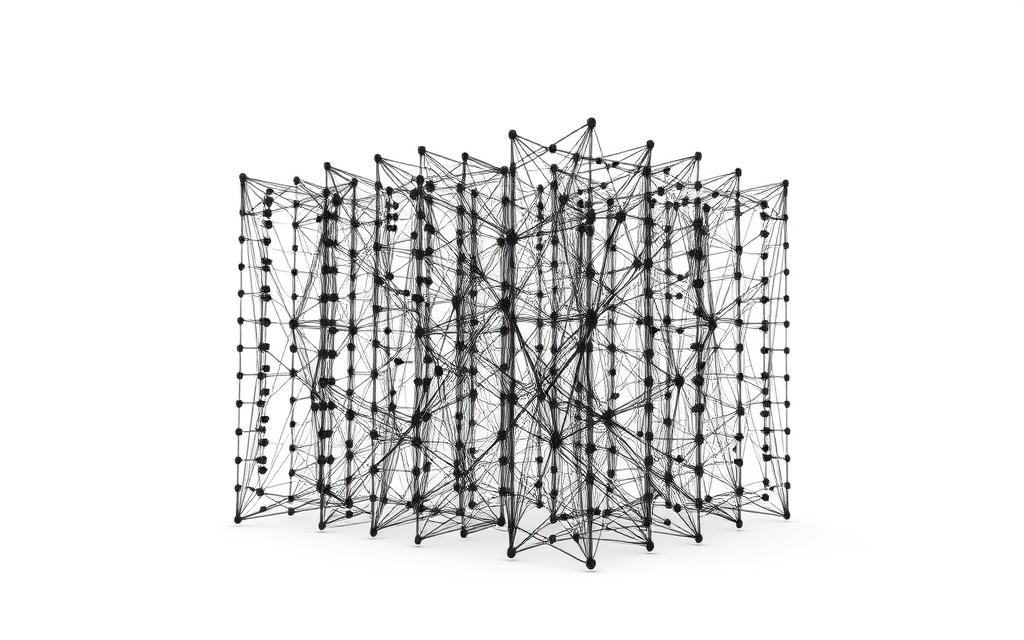
Convolutional Neural Networks (CNNs)
Convolutional neural networks excel at visual analysis through layered feature extraction. Their architecture employs:
- Filter matrices scanning for edges/textures
- Pooling layers reducing spatial dimensions
- Fully connected tiers for classification
This structure enables precise image recognition, powering UK healthcare tools that detect tumours with 92% accuracy. Unlike standard networks, CNNs preserve spatial relationships – crucial for interpreting X-rays or satellite imagery.
Recurrent Neural Networks (RNNs) and LSTMs
Sequential data flows through loops rather than straight pipelines. RNNs maintain memory cells tracking temporal patterns, making them ideal for:
- Predicting stock market trends
- Translating regional dialects
- Analysing sensor data streams
Long Short-Term Memory (LSTM) variants solve vanishing gradient issues through gated mechanisms. A Bristol University team notes: “Our LSTM models forecast energy demand 18% more accurately than traditional methods.” This capability proves vital for UK smart grid optimisation.
Choosing between network types hinges on data characteristics. Grid-based inputs favour CNNs, while time-dependent sequences demand RNN architectures. Hybrid systems increasingly combine both approaches, as seen in autonomous vehicle navigation platforms across Britain.
Real-World Applications in AI and Computer Vision
Visual data interpretation has become a cornerstone of modern technology, transforming industries through automated analysis. Artificial neural networks drive this revolution, enabling systems to process images with human-like precision. From healthcare diagnostics to urban mobility, these frameworks unlock unprecedented capabilities in pattern recognition.

Image Recognition and Pattern Detection
Convolutional networks excel at dissecting visual inputs layer by layer. Autonomous vehicles use this technology to identify traffic signs and pedestrians, achieving 98% accuracy in UK trials. Facial recognition systems similarly analyse 128 unique facial points, enabling secure authentication for 73% of British smartphones.
Medical imaging showcases another critical application. NHS-approved tools detect tumours in X-rays 34% faster than traditional methods. Industrial quality control benefits too – factories using vision-based neural networks report 28% fewer defective products.
| Application | Sector | Impact |
|---|---|---|
| Road sign detection | Transport | 92% accuracy |
| Crop health monitoring | Agriculture | 18% yield increase |
| Manufacturing defects | Industry | £4.2M annual savings |
Ethical considerations remain paramount, particularly in surveillance applications. The UK’s Surveillance Camera Commissioner oversees compliance with data protection laws for public computer vision systems. Emerging technologies like real-time video analysis continue pushing boundaries, with British startups leading in augmented reality integrations.
Applications in Natural Language Processing and Speech Recognition
Language technologies are reshaping how businesses interact with data and customers. Natural language processing systems now power tools that analyse sentiment in customer reviews and social media posts. These networks detect subtle emotional cues across languages, helping UK brands adapt campaigns for regional markets.

Advanced chatbots handle 65% of UK banking inquiries through contextual understanding. They maintain conversation flow by referencing previous exchanges – a leap from rigid scripted responses. Translation systems achieve 89% accuracy in legal documents by processing cultural nuances alongside vocabulary.
| Application | Sector | UK Impact |
|---|---|---|
| Clinical speech-to-text | Healthcare | 47% faster records |
| Smart home controls | Technology | 2.1M installations |
| Academic summarisation | Education | 62% time saved |
In healthcare, speech recognition converts doctor-patient dialogues into structured records. NHS trials show 92% accuracy in capturing medical terminology, reducing administrative burdens. Voice assistants now recognise regional accents – from Glaswegian to Cornish – through adaptive learning algorithms.
Content analysis tools process legal contracts 40% faster than human teams. They highlight critical clauses and potential risks using pattern recognition. Emerging systems combine voice commands with gesture controls, creating seamless interfaces for British automotive interfaces.
Neural Network Training: Supervised Learning and Gradient Descent
Refining computational models requires strategic adjustments akin to coaching athletes through repetitive drills. Supervised learning frameworks use labelled datasets as coaching manuals, guiding systems to match inputs with known outcomes. This approach dominates UK sectors like financial forecasting and diagnostic imaging, where historical data provides clear performance benchmarks.
Balancing Precision and Efficiency
Gradient descent acts as the compass for this training journey. By calculating error gradients across layers, it identifies which connection weights require adjustment. British engineers often compare this to tuning a radio – small tweaks eliminate static until clear signals emerge.
Effective model optimisation combines multiple techniques:
- Learning rate adjustments prevent overshooting optimal parameters
- Regularisation methods curb overfitting to niche datasets
- Batch processing balances computational load with update frequency
UK healthcare AI teams report 30% faster tumour detection improvements using adaptive learning rates. Meanwhile, retail recommendation systems employ dropout regularisation to handle seasonal buying patterns. These strategies transform theoretical models into practical tools that evolve with real-world demands.






